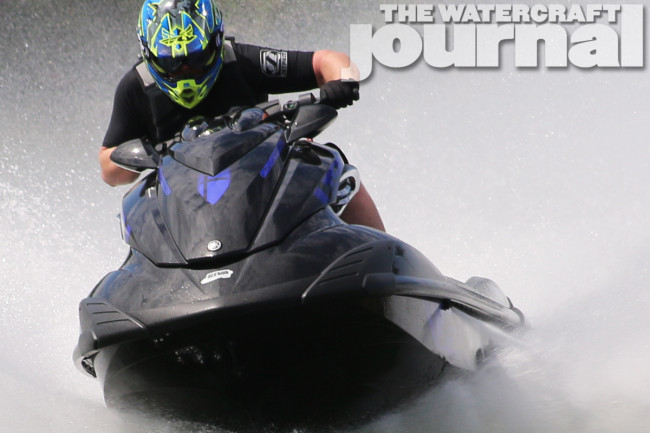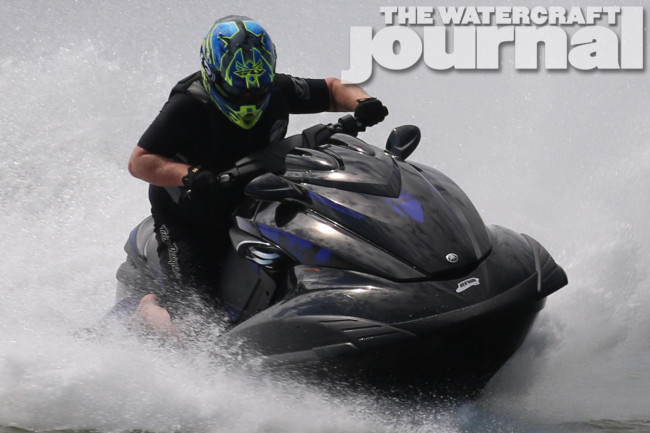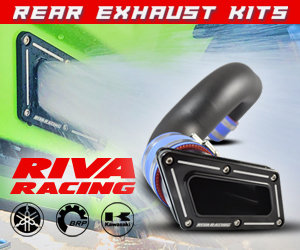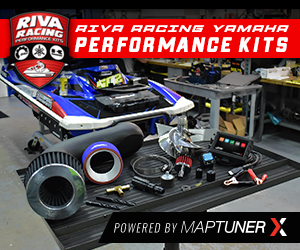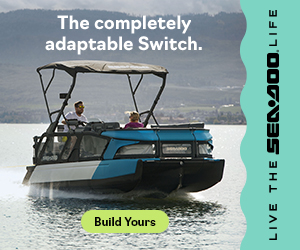Remember back when all it took to tune your ski was a good set of tools? Well, unless you’re still tinkering with the ol’ two-stroke smokers, you’re likely dealing with some advanced calibration tools. If achieving the maximum performance your state-of-the-art powerplant – and doing so safely – then you’re gonna love what RIVA Racing has developed.
RIVA Racing’s new Vi-PEC V88R3 Pro-Series Yamaha ECU can effectively unlock all 1.8L Yamaha SVHO, SHO & HO engines’ hiden potential using either RIVA’s supplied mapping or through their user defined parameters. See, not only does RIVA’s new Vi-Pec V88R3 Pro-Series ECU provide access to performance-enhancing digital mapping never before available to the public, but can be individually tuned to whatever combination of RIVA Racing performance components you’ve already installed on your Yamaha WaveRunner, be it to improve intake and exhaust flow, cooling and/or increasing boost.
As RIVA Racing’s Mark Sheffield explained back in March, “With each map, we first start with the engine on our dyno. When building these tunes, we first verify target air/fuel ratios throughout the entire RPM range of the tune, making adjustments to the fuel tables as necessary. Once we have reached targeted air/fuel values, we then focus on ignition timing. Again, we slowly go through the entire RPM range of the tune, monitoring ignition timing vs. horsepower produced.
“Once this process is complete, we then transfer the hardware and the file to the watercraft. Once installed, we go through a series of ‘cold starts.’ This is to ensure proper starting and fueling when the engine is under colder than normal conditions. We’ll let it sit in a cold environment overnight, and then proceed with cold starts the next morning. Once the ‘cold starts’ process is complete, it’s time to hit the water.
“When water testing, we go through the entire RPM range of the tune in steps. First running at idle for a few minutes, then 2000, 2500, 3000RPM and so on, (holding the RPM for a couple minutes at each point) until we go through the RPM range of the tune. The test rider will monitor the engine data live as well as being recorded on the Vi-PEC data-logging feature.
“After each session, the data log is downloaded and carefully reviewed. Adjustments are made if necessary to optimize performance. Once initial water testing is complete & target values are verified, we go through a series of endurance testing and heat things up. Again, by monitoring data and reviewing data logs provided by the Vi-PEC, we establish limits and parameters to create safety margins with each tune.
“We log about 20 hours of endurance testing before any of these files are sent out for field testing. Files are sent to certain racers & dealers in different locations around the world. Using the customer’s Vi-PEC data logs, we can adjust and optimize tunes for these varying conditions. This way we have the information to support our customers in other parts of the world with different environmental conditions than ours. Once we complete this step, at that time we are ready to release this base map to the public.”
Of course, our faithful readers will recognize much of Sheffield’s above statement when we first test rode their Vi-Pec equipped FZR earlier in the year. Priced at $2,399.95, the Vi-Pec V88R3 is some serious go-fast equipment that will truly unleash the inner beast hidden deep within your otherwise happy-go-lucky Yamaha, and is specifically designed to maximize the most out of your WaveRunner in conjunction with a full array of RIVA Racing performance-enhancing components.




